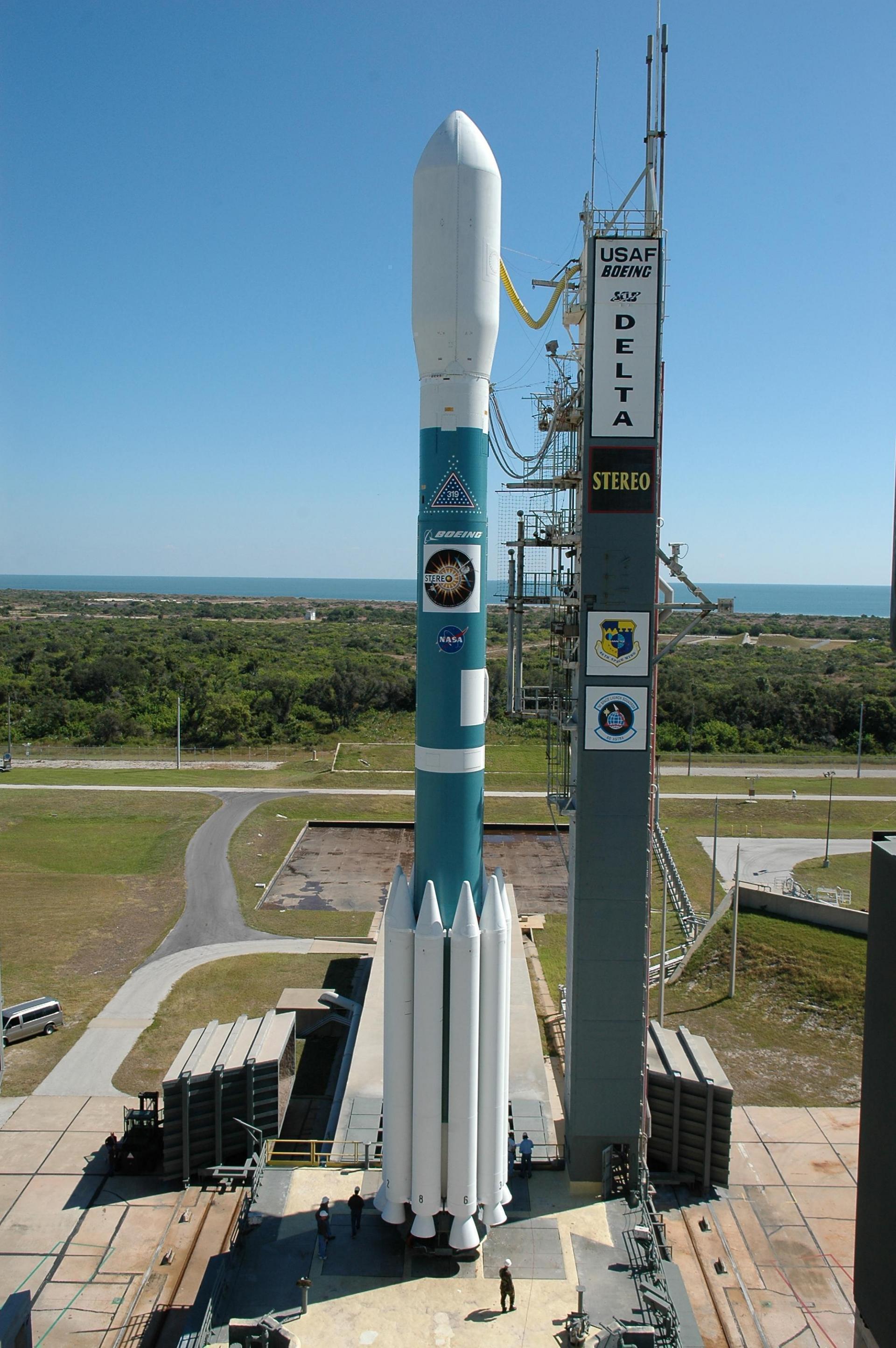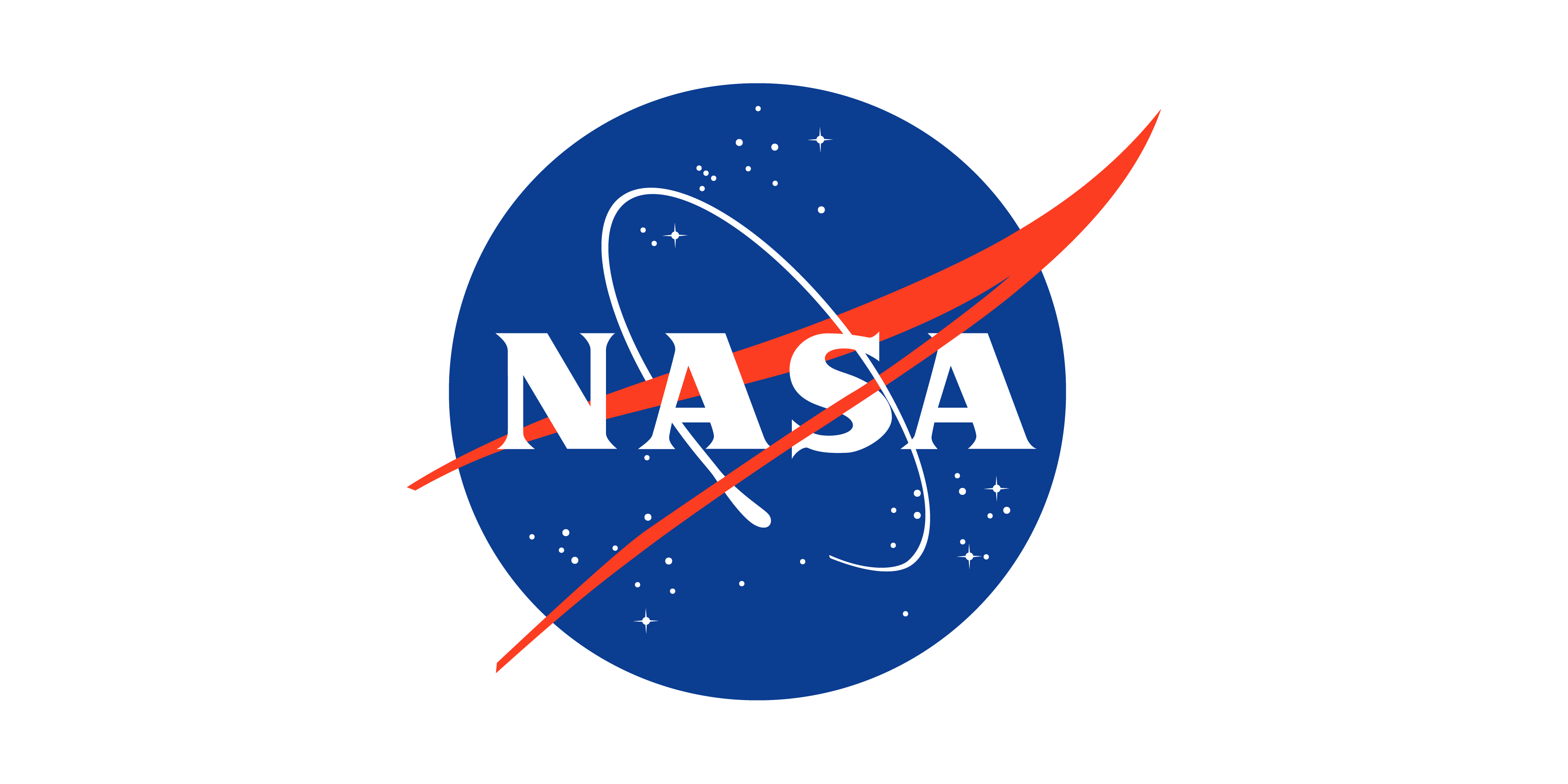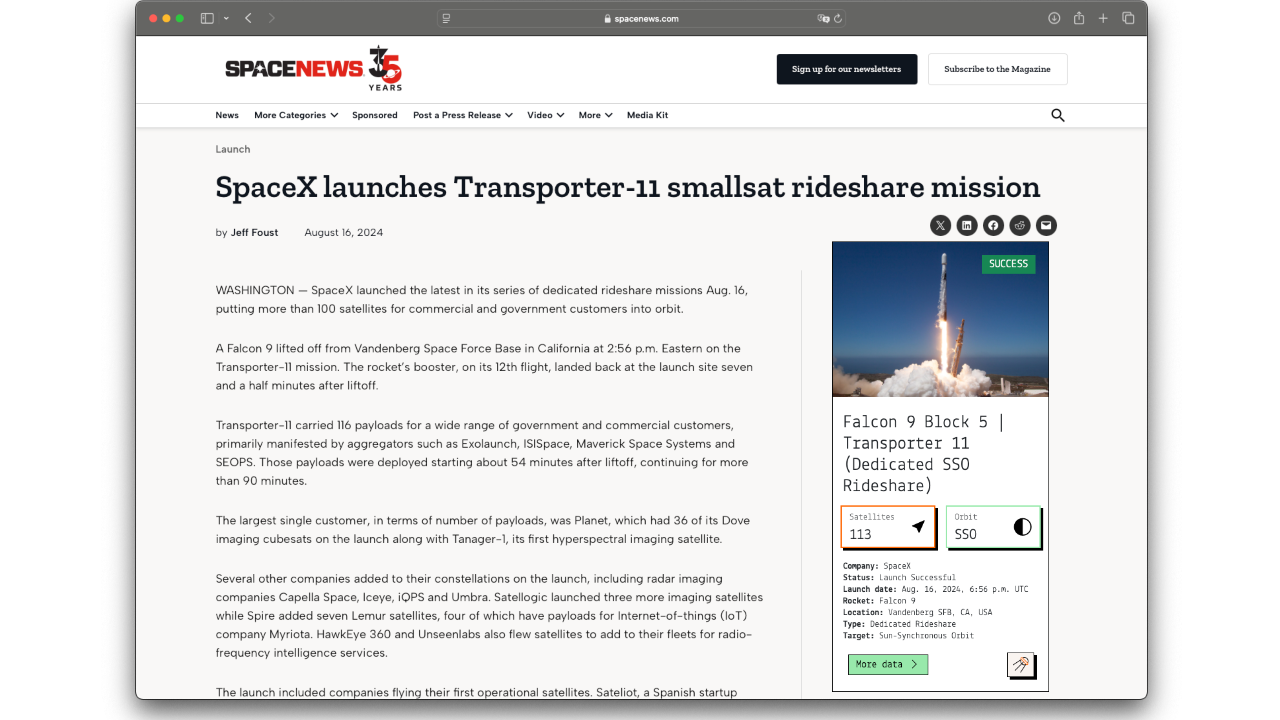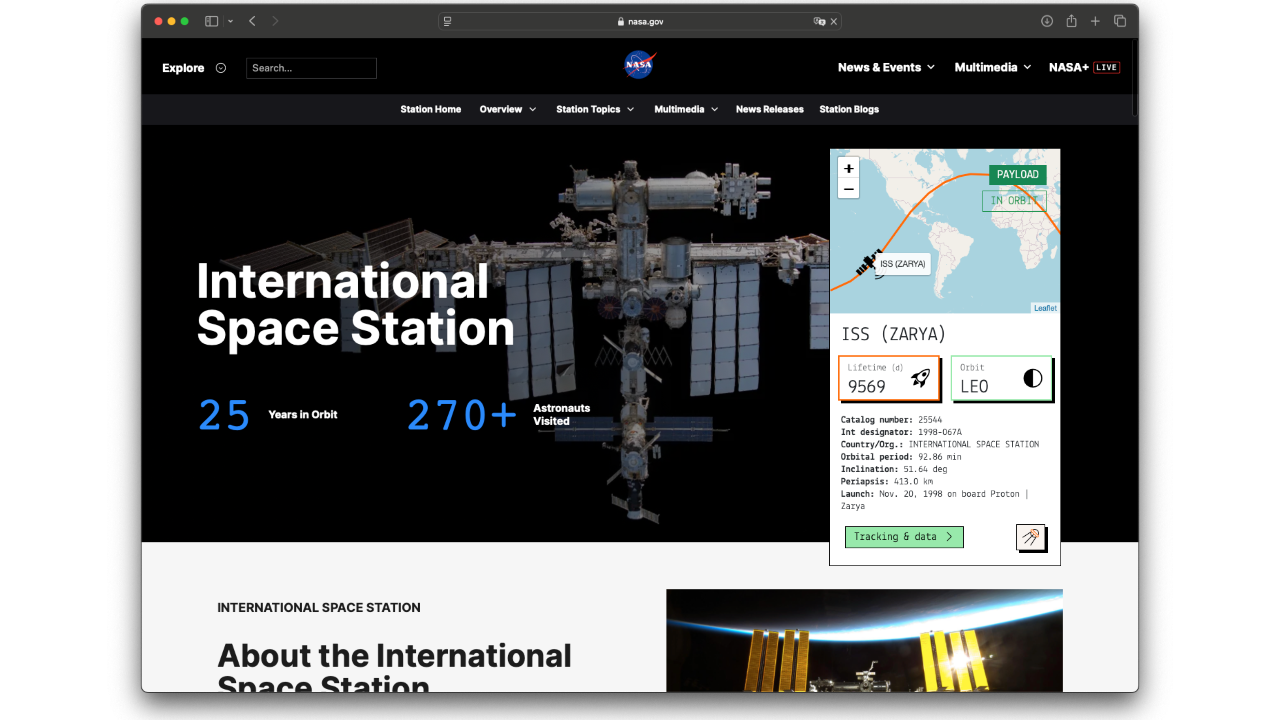Launch status
Launch status information for space mission ‘Delta II 7925-10L | Kepler’.

Success
Status: Launch Successful
Class: normal
Launch T0: March 7, 2009, 3:49 a.m.
Timezone: America/New_York
Launch authority
Details about the the rocket, its target orbit and the launch pad location.
Mission |
Kepler (Helio-N/A) |
|---|---|
Launcher |
United Launch Alliance |
Rocket |
Delta II |
Location |
Cape Canaveral SFS, FL, USA |
Pad |
Space Launch Complex 17B |
Type |
Astrophysics |
Orbit |
Heliocentric N/A (Helio-N/A) |
Satellites on-board
Satellites on-board the space mission ‘Delta II 7925-10L | Kepler’ are identified by cross checking database entries for launches and satellites. Results could be inaccurate from time to time.
Launch statistics
Tracking key statistics for space mission ‘Delta II 7925-10L | Kepler’, classified in stats relative to the specific mission launch year or to all-time values.
Orbital Launch
#4966
To this date
Location Launch
#659
To this date
Pad Launch
#130
To this date
Agency Launch
#25
To this date
Orbital Launch
#12
Year 2009
Location Launch
#2
Year 2009
Pad Launch
#1
Year 2009
Agency Launch
#3
Year 2009
Latest news about the launch
News about the space mission ‘Delta II 7925-10L | Kepler’ are fetched daily from the best sources online.

Astronomers Map Stellar ‘Polka Dots’ Using NASA’s TESS, Kepler
Scientists have devised a new method for mapping the spottiness of distant stars by using observations from NASA missions of orbiting planets crossing their stars’ faces. The model builds on a technique researchers have used for decades to study star spot...

Data from Kepler reveals reason behind shrinking exoplanets
Located throughout the universe, there are billions — possibly even trillions — of exoplanets orbiting around stars of varying shapes, sizes, colors, and more. Like the stars they orbit, exoplanets also come in many different shapes, sizes, and colors, wi...
Newsletter sign-up
Weekly statistics, charts and insights to help you stay on top of the space industry.




